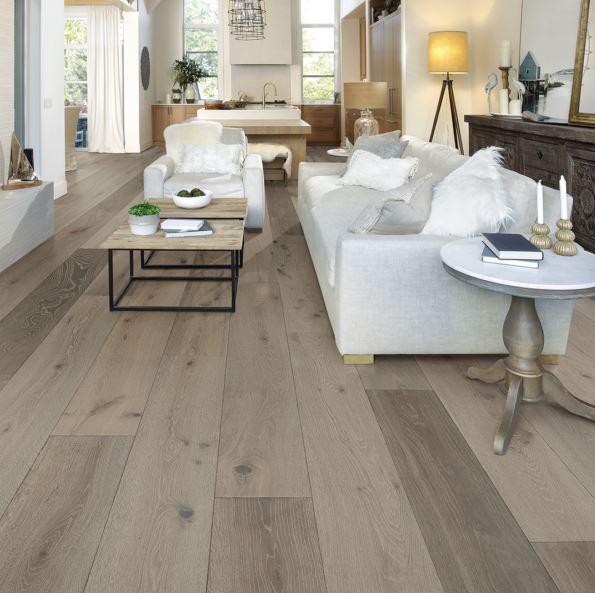When it comes to designing beautiful and inviting interiors, few elements rival the warmth, sophistication, and charm of wooden flooring. For centuries, wood has been one of the most preferred flooring materials due to its natural beauty, durability, and ability to blend seamlessly with different styles of décor. Whether in modern apartments, luxury villas, or commercial spaces, wooden floors continue to be a timeless choice that adds value and personality to any environment.
In this article, we will explore the advantages of wooden flooring, the different types available, its common applications, maintenance tips, and why it remains an excellent investment for homes and businesses.
Why Choose Wooden Flooring?
Wooden flooring offers a unique blend of functionality and style. Its rich appearance, natural textures, and lasting quality make it more than just a flooring option—it becomes an integral part of the interior’s identity. Here are some reasons why homeowners and designers consistently choose wood:
Timeless Appeal – Wooden flooring never goes out of style. Its natural beauty enhances traditional, rustic, and modern interiors alike.
Durability – High-quality wood can last for decades if maintained properly. Unlike many synthetic materials, it ages gracefully and even develops a character with time.
Comfort and Warmth – Unlike tiles or stone, wooden floors offer warmth underfoot, creating a cozy and inviting ambiance.
Value Addition – Installing wooden flooring is often seen as an investment since it increases property value and attracts potential buyers.
Versatility – Wood complements a wide range of furniture, wall colors, and design themes, making it a versatile choice for almost any setting.
Types of Wooden Flooring
Wooden flooring comes in several varieties, each with unique characteristics, textures, and pricing. Understanding these options helps in choosing the best fit for your space.
Solid Wood Flooring
Made from a single piece of natural timber, solid wood flooring is known for its authenticity and durability. It can be sanded and refinished multiple times, making it ideal for long-term use.
Engineered Wood Flooring
Composed of multiple layers of wood veneer and plywood, engineered wood offers greater stability and resistance to moisture compared to solid wood. It is perfect for areas where temperature and humidity fluctuate.
Laminate Wood Flooring
Although not made entirely from real wood, laminate flooring mimics the appearance of wood through a photographic layer. It is budget-friendly, scratch-resistant, and easy to install, making it suitable for busy households.
Parquet Flooring
This style features wood pieces arranged in decorative geometric patterns. Parquet flooring adds a touch of luxury and is often used in formal living spaces and high-end interiors.
Reclaimed Wood Flooring
Sourced from old buildings or recycled wood, this eco-friendly option brings a rustic, vintage charm while promoting sustainability.
Common Applications of Wooden Flooring
The versatility of wooden flooring makes it suitable for both residential and commercial environments.
Living Rooms & Bedrooms – Wooden floors create a warm and cozy feel, making these spaces inviting and stylish.
Dining Areas – Wood enhances the sense of sophistication, providing a perfect backdrop for family gatherings and entertaining guests.
Offices & Commercial Spaces – Wooden flooring lends a professional, polished look to corporate environments, boosting aesthetics and comfort.
Boutiques & Showrooms – Its elegance helps highlight products, creating a premium shopping experience.
Hotels & Restaurants – Wooden floors add luxury and hospitality, enhancing customer satisfaction.
Maintenance Tips for Wooden Flooring
Although wooden flooring is durable, proper care is essential to retain its charm and extend its lifespan. Here are some maintenance practices to keep in mind:
Regular Cleaning – Sweep or vacuum daily to remove dirt and grit that can cause scratches.
Avoid Excess Moisture – Wipe spills immediately and avoid wet mopping to prevent water damage.
Use Protective Pads – Place felt pads under furniture legs to prevent dents and scratches.
Refinishing – Depending on usage, wooden floors can be sanded and refinished to restore their shine and smoothness.
Climate Control – Use humidifiers in dry seasons and dehumidifiers in humid conditions to maintain balanced moisture levels.
Advantages Over Other Flooring Options
While tiles, vinyl, and carpets are common alternatives, wooden flooring stands out for several reasons:
Longevity – Wood can last generations with proper care.
Eco-Friendliness – When sourced responsibly, it is a renewable and sustainable material.
Unique Patterns – Each wooden plank has distinct grains and textures, ensuring no two floors look alike.
Better Insulation – Wood provides natural insulation, keeping interiors warmer in winter and cooler in summer.
Why Wooden Flooring is a Great Investment
Choosing wooden flooring is not just about style—it’s also a smart financial and practical decision. It elevates the visual appeal of any property, enhances comfort, and significantly boosts resale value. Additionally, its adaptability ensures that whether you want a traditional, rustic, or ultra-modern look, wooden floors will seamlessly fit the theme.
Moreover, with advancements in finishes and treatments, today’s wooden flooring options are more resistant to scratches, stains, and moisture than ever before, making them suitable for both homes and high-traffic commercial spaces.
Conclusion
Wooden flooring remains one of the most desirable flooring solutions worldwide, and for good reason. It combines durability, natural elegance, and timeless style in a way few materials can. Whether you prefer solid wood, engineered options, or even reclaimed wood for a sustainable choice, wooden flooring will always bring warmth and sophistication to your interiors.
For homeowners and businesses seeking to create a lasting impression, wooden flooring is not just a trend—it is a long-term investment in beauty, comfort, and quality.

